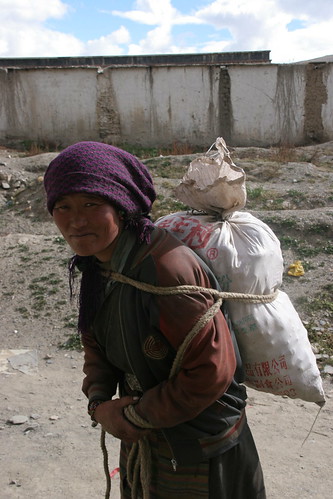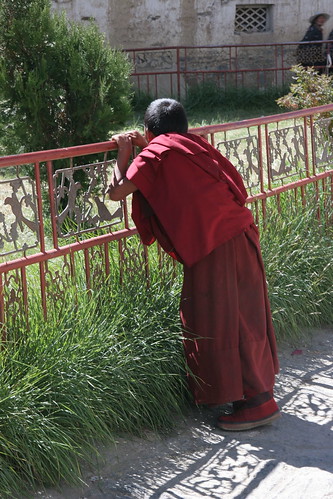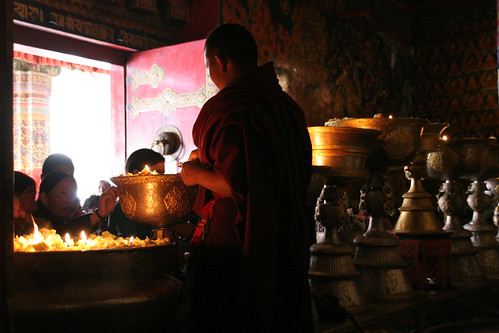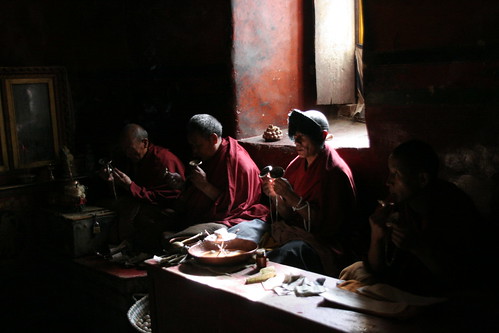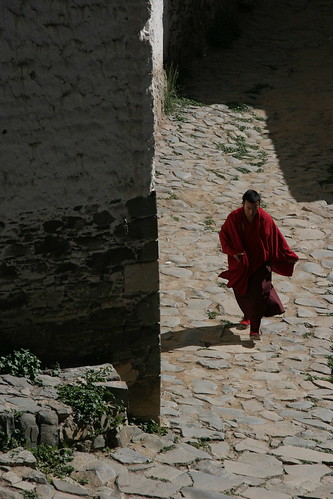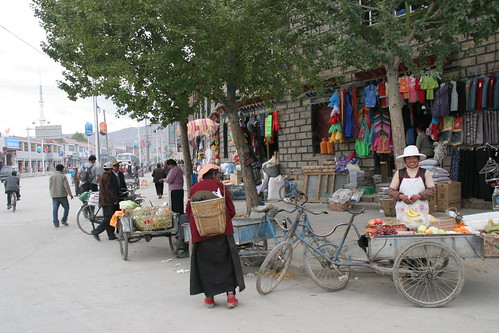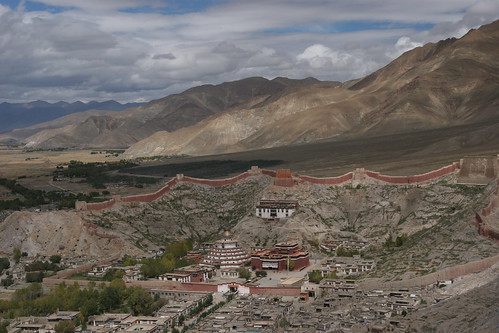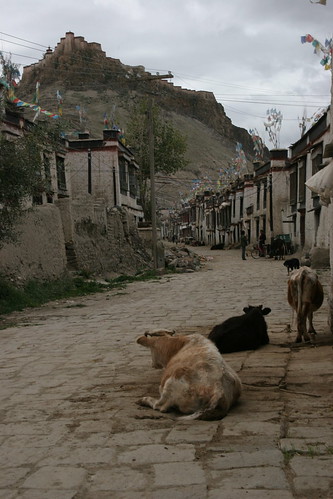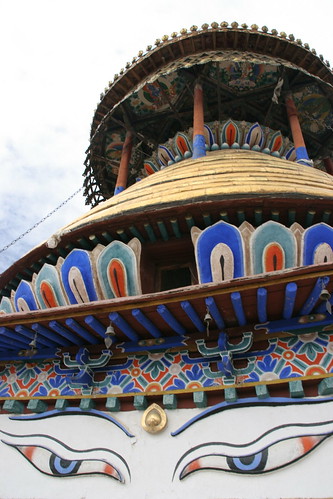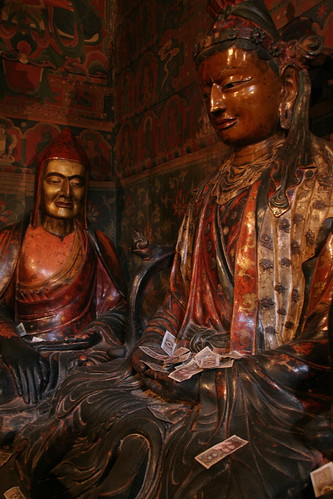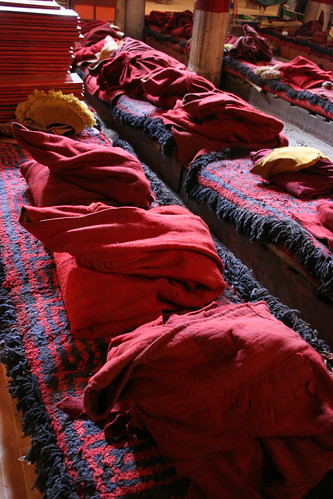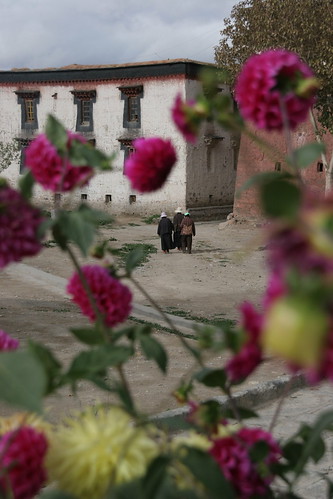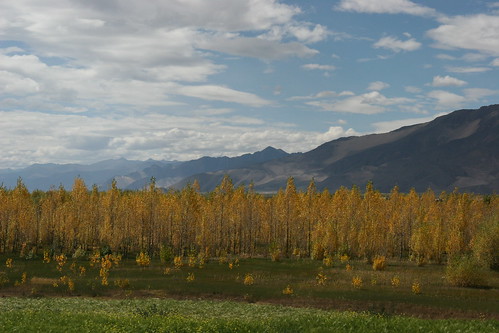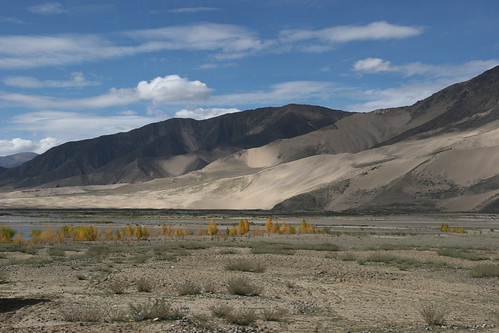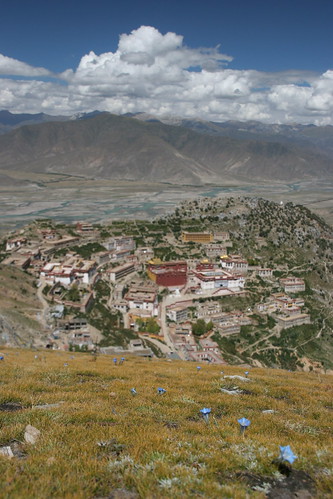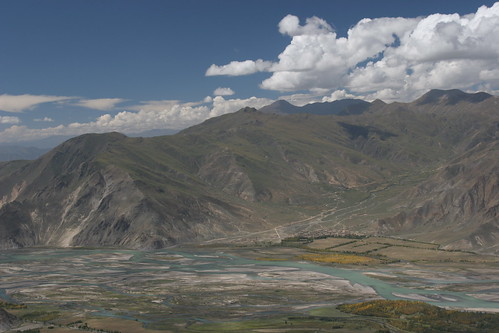Sunday, January 06, 2008
Sakya Monastery, Tibet

Sakya is a three-hour drive from Shigatse across empty landscapes studded with the odd village. It's a small dusty town dominated by an austere brooding monastery. There are actually two monasteries: the northern monastery which is mostly reduced to ruins and the southern, a grim, forbidding fortress with thick grey walls. Only two chapels are open at the moment so I take the opportunity instead to walk around the monastery through piles of rubble.
One of the unusual things about the town is the colour of the buildings. Unlike the whitewashed houses seen elsewhere in Tibet, all the buildings are painted in grey with white and red vertical stripes. The colour symbolises the Risum Gonpo, the trinity of the bodhisattvas and marks Sakya authority.
Tashilhunpo Monastery, Shigatse, Tibet
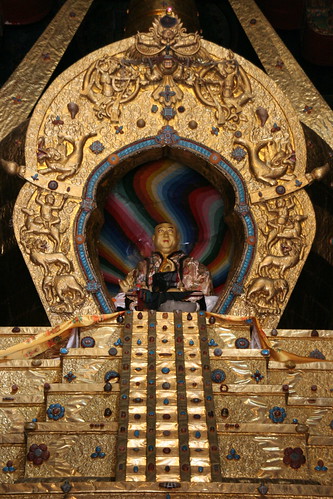
The highlight for me is the Tomb of the 10th Panchen Lama (Sisum Namgyel), Tibet's favourite Panchen Lama. A gold-plated chorten holds his remains while his image is surrounded by kaleidoscopic rainbow swirls. The photography fee in this chapel is 125 Yuan (about £9). When I approach the monk to pay he seems surprised.
Tashilhunpo Monastery, Shigatse, Tibet

Although there are hordes of pilgrims (and tourists) which makes queueing to enter chapels slightly unpleasant, Tashilhunpo is the first place I feel spiritually close to the Dalai and Panchen Lamas. I can't quite define the reason why but for this feeling I decide it's my favourite monastery. Although we have several hours here, it doesn't feel enough. There's a huge area to explore which would justify an extra day.
As I enter the Chapel of Jampa (Jamkhang Chenmo) I'm greeted first by a sign saying photography costs 75 Yuan (about £5). Behind the stream of pilgrims spooning yak butter into candle vats is the world's second largest Buddha. At 26 metres high it took 900 workers six years to complete. Covered in 300kg of gold and precious stones it's a formidable structure.
Tashilhunpo Monastery, Shigatse, Tibet

The huge monastery is a walled town in its own right. Its cobbled lanes throng with the murmur of pilgrims queueing to enter the golden-topped ochre buildings containing the tombs of past Panchen Lamas. At its peak Tashilhunpo was home to 5000 monks. These days it houses around 600. Many of the monks here are English-speaking and said to be in cahoots with the Chinese authorities. We are warned not to say anything controversial inside or show pictures of the Dalai Lama.
Tashilhunpo Monastery, Shigatse, Tibet

Tashilhunpo is one of the six great Gelugpa monasteries along with Drepung, Sera and Ganden. Founded in 1447 by a disciple of Tsongkhapa, Genden Drup, who was retroactively named the first Dalai Lama. When the fifth Dalai Lama declared his teacher, then the abbot of Tashilhunpo, to be a manifestation of Opagme (a deification of the Buddha's faculty of cognition and perception), the monastery's importance rose and Tashilhunpo became the seat of the Panchen Lama. 'Panchen' literally means 'great scholar' while 'lama' means 'higher monk'.
Gyantse Dzong, Tibet
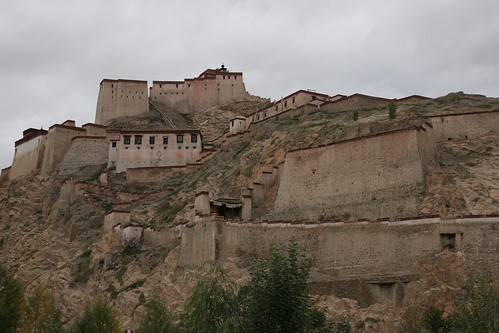
This 14th century fort looms over the town and the surrounding Nyang-chu Valley. It's a 20 minute walk up a snaking path plus a further hike up some very steep steps to reach the top. The views are worth the effort.
At the foot of Gyantse Dzong is the 'Memorial Hall of Anti British', a room filled with a warped account of the 1904 British invasion stating 'Tibet is an inalienable part of the motherland...' and how content the people are now that it's under communist rule.
Tuesday, January 01, 2008
Gyantse Kumbum, Tibet
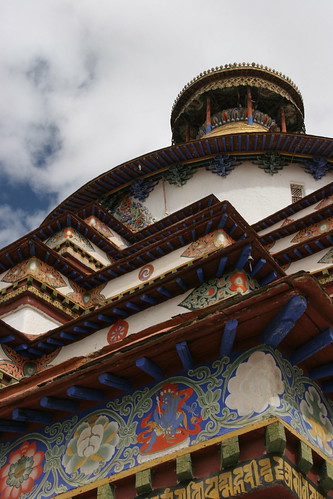
In the monastery complex is the famed Gyantse Kumbum, (kumbum means '100,000 images') the largest chorten in Tibet. Designed in layers as a three-dimensional mandala or model of the Buddhist universe, it has five levels (plus a 6th-floor viewing platform) which represent the five stages to enlightenment. The golden dome rises over four sets of eyes that gaze out in the directions of the cardinal points. A clockwise route leads pilgrims up dingy staircases to the next level. The chorten has 77 chapels in total, some containing well-preserved murals and buddhas, although many of them are dark.
Pelkor Chode Monastery, Gyantse, Tibet
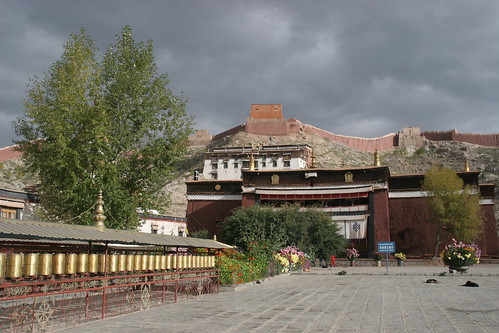
I'm in Gyantse to see the Pelkor Chode Monastery, founded in 1418, and which brought together three different orders of Buddhism in one place.
The assembly hall is dark but atmospheric with monk robes piled high on benches. The chapels adorned with various images of Buddha are thick with the smell of yak-butter candles.
Yamdrok-tso, Tibet
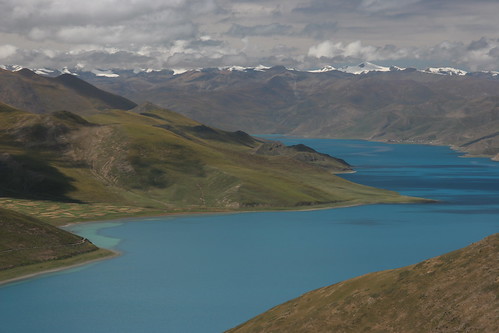
The road leads up to Kamba-la Pass at 4950 metres where there are dazzling views of the deep turquoise Yamdrok-tso lake. In the distance, the snow-capped Himalayas and the huge massif of Mount Nojin Kangstan (7191 metres) pierce the clouds. I've never seen mountains of this grandeur before.
Yamdrok-tso is a coiling scorpion-shaped body of water. Tibetan pilgrims circumambulate the sacred lake in seven days. Controversially the Chinese government wanted to utilise gravity to create a hydroelectric supply and by the mid-1980s had a agreed a plan to build a six-kilometre tunnel 10km below the surface of the lake that would send the waters dropping 846 metres into the Yarlung Tsangpo river. Work was temporarily halted after opposition from the Panchen Lama, but in 1997 the turbines had started generating electricity. The project is controversial not only because the lake is sacred to Tibetans, but because Yamdrok-tso is a dead lake with no outlet and no perennial source of water, which means that the water drained can never be replenished.
Leaving Lhasa
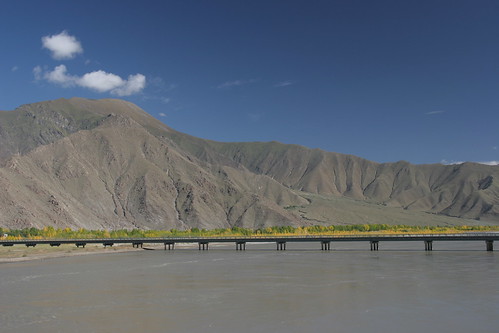
I spent last night in the hotel watching Tibetan TV, which more or less consists of fifty-odd channels shamelessly promoting the greatness of China, from incredible feats in surgery to engineering. I flick through the entire range several times amazed that there are no international news channels or English-speaking programmes.
I didn't sleep well last night but I'm revived by my new addiction: masala tea.
Today we're driving to Gyantse via Yamdrok-tso, one of Tibet's four holy lakes. As we leave Lhasa we travel though wide open landscapes of mountains, rivers and yellow trees, all resplendent under a bright cobalt-blue sky. Soon we climbing into scenery not unlike that of the Atlas Mountains.
High Kora, Ganden Monastery, Tibet
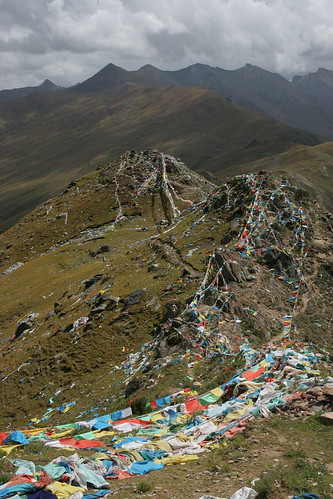
The Ganden kora (pilgrim's path) is a stunning walk around the monastery offering fantastic views of the Kyi-chu valley. There are two parts to the walk - the high kora which climbs Angkor Ri and the low kora which follows an even track around the back of the monastery. As everyone else is taking the hard option, it seems only fair that I attempt the same.
My guide book allows 40 minutes to climb to the top of Angkor Ri at 5050 metres but it takes me an hour. It's steep, rocky and the air is thin. I need to stop every few paces as I feel winded. The summit is deceiving. When you think you can see the end, you are only half way.
As I stumble with great relief towards the multi-coloured prayer flags on the summit, third-last in my group, I feel it was all worth it for the view.
Subscribe to:
Posts (Atom)
